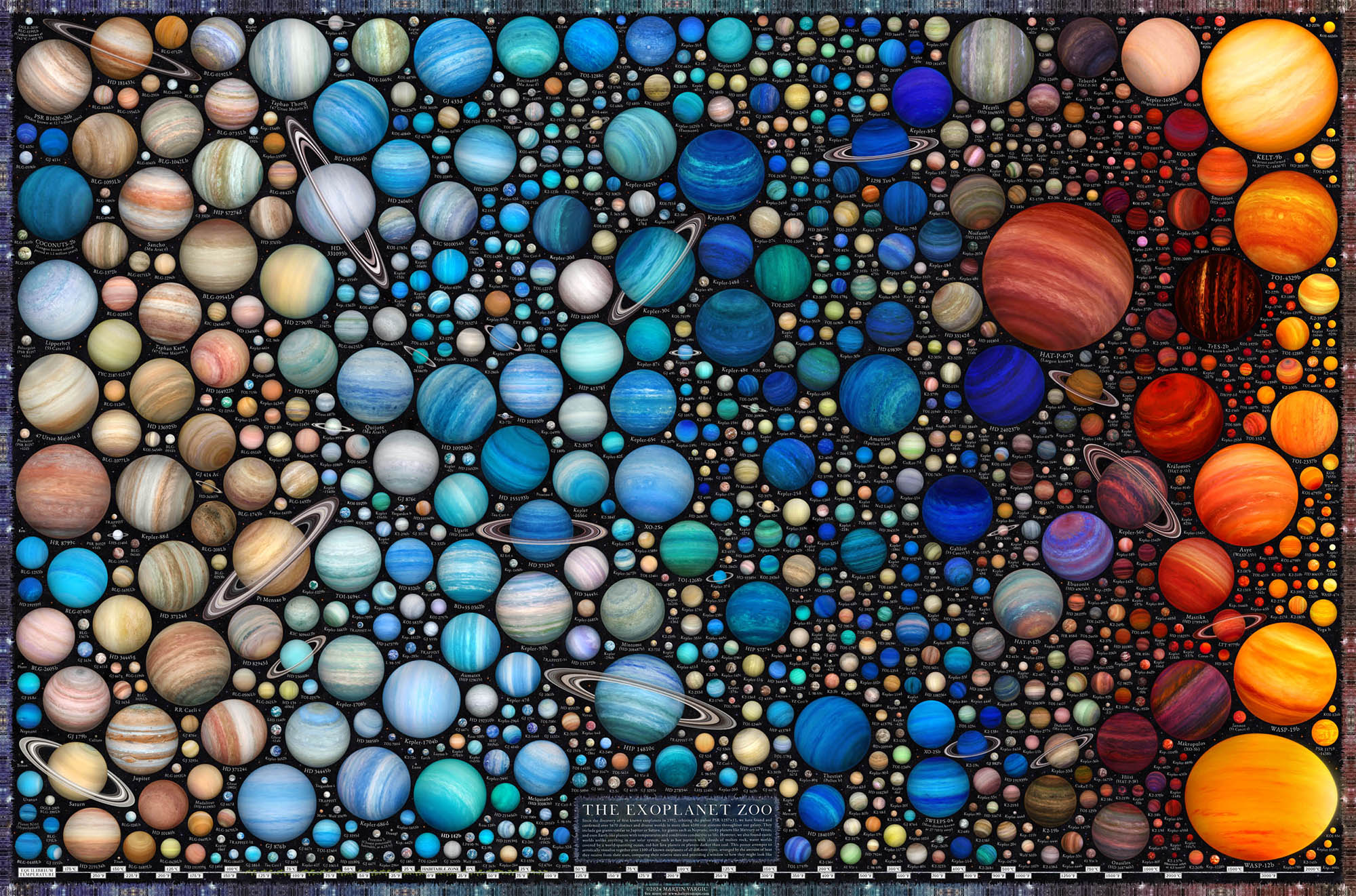More than 5500 exoplanets have been discovered. An exoplanet is any planet beyond our solar system. Most of them orbit other stars, but some free-floating exoplanets, called rogue planets, don’t belong to any star. Most of the exoplanets discovered so far are in a relatively “small” region of our galaxy, the Milky Way.
Even the closest known exoplanet to Earth, Proxima Centauri b, is still about 4 light-years away. Today we know there are more planets than stars in the galaxy. We humans have been speculating about such possibilities for thousands of years, but ours is the first generation to know, with certainty, that exoplanets are really out there. As yet we have no way to reach them…at the moment.

By measuring exoplanets’ diameters and masses, it is possible to see compositions ranging from rocky (like Earth and Venus) to gas-rich (like Jupiter and Saturn). Some planets may be dominated by water or ice, while others are dominated by iron or carbon. Lava worlds covered in molten seas, puffy planets the density of styrofoam and dense cores of planets still orbiting their stars, are known.
Based on theoretical models, the cover image is an illustrated guess as to what some of these exoplanets might look like. Neptune-type planets occupy the middle and are colored blue because of blue-scattering atmospheric methane they might contain. On the sides of the illustration, Jupiter-type planets are shown, colored tan and red from the scatterings of atmospheric gases that likely include small amounts of carbon. Interspersed are many Earth-type rocky planets of many colors.
As more exoplanets are discovered and investigated, humanity is developing a better understanding of how common Earth-like planets are. Earth is the only planet we know of with life on it…so far. Scientists are searching the galaxy for planets similar to Earth, and signs of life.
Are we alone?
The big question – Is there life beyond Earth? – leads to another observation: we don’t really have a universally accepted definition of life itself. We have an Earth’s definition of life. That said, we might not need one.
Furthermore, will we know life when we see it? The James Webb Space Telescope, could get the first glimpses: the mix of gases in the atmospheres of Earth-sized exoplanets. Webb, or a similar spacecraft in the future, could pick up signs of an atmosphere like our own – oxygen, carbon dioxide, methane. A strong indication of possible life. Future telescopes might even pick up signs of photosynthesis – the transformation of light into chemical energy by plants – or even gases or molecules suggesting the presence of animal life. Intelligent, technological life might create atmospheric pollution, as it does on our planet, also detectable from afar.
References:
Illustration Credit & Copyright: Martin Vargic, Halcyon Maps.





